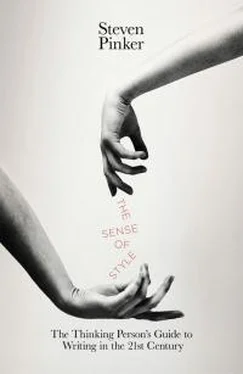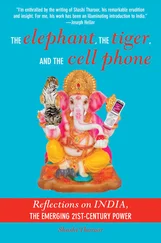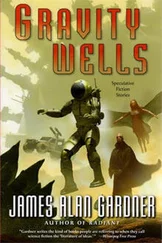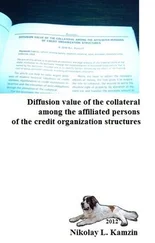It’s no coincidence that we use the word “coherent” to refer both to concrete passages of text and to abstract lines of reasoning, because the logical relations that govern them—implication, generalization, counter-example, denial, causation—are the same. Though the claim that good prose leads to good thinking is not always true (brilliant thinkers can be clumsy writers, and slick writers can be glib thinkers), it may be true when it comes to the mastery of coherence. If you try to repair an incoherent text and find that no placement of therefore s and moreover s and however s will hold it together, that is a sign that the underlying argument may be incoherent, too.

Coherence depends on more than mechanical decisions such as keeping the topic in subject position and choosing appropriate connectives. It depends as well on impressions that build up in a reader over the course of reading many paragraphs and that depend on the author’s grasp of the text as a whole.
Let me explain what I mean by sharing my reaction to another passage, this one much loftier in tone and ambition than “Ask the Bird Folks.” It is the opening of John Keegan’s 1993 magnum opus, A History of Warfare:
War is not the continuation of policy by other means. The world would be a simpler place to understand if this dictum of Clausewitz’s were true. Clausewitz, a Prussian veteran of the Napoleonic wars who used his years of retirement to compose what was destined to become the most famous book on war—called On War —ever written, actually wrote that war is the continuation “of political intercourse” ( des politischen Verkehrs ) “with the intermixing of other means” ( mit Einmischung anderer Mittel ). The original German expresses a more subtle and complex idea than the English words in which it is so frequently quoted. In either form, however, Clausewitz’s thought is incomplete. It implies the existence of states, of state interests and of rational calculation about how they may be achieved. Yet war antedates the state, diplomacy and strategy by many millennia. Warfare is almost as old as man himself, and reaches into the most secret places of the human heart, places where self dissolves rational purpose, where pride reigns, where emotion is paramount, where instinct is king. “Man is a political animal,” said Aristotle. Clausewitz, a child of Aristotle, went no further than to say that a political animal is a warmaking animal. Neither dared confront the thought that man is a thinking animal in whom the intellect directs the urge to hunt and the ability to kill. 16
Keegan is among the most esteemed military historians who ever lived, and A History of Warfare was a critically acclaimed bestseller. Several reviews singled out the quality of his writing for praise. Certainly the mechanics here are sound, and at first glance, so is the coherence. The topics are war and Clausewitz, and we have a number of connectives, like however and yet. Nonetheless, I found this paragraph barely coherent.
The problems begin in the first sentence. Why is a book on warfare starting out by telling us what war is not ? I recognized the dictum from Clausewitz, but it was hardly uppermost in my mind as I began a book on war, if for no other reason than that I always found it obscure—an impression confirmed by Keegan’s equivocating explanation in the third and fourth sentences. If Clausewitz’s dictum is so subtle, complex, and misunderstood, how is the reader being enlightened by being told it is false? And if even the people who are familiar with the dictum don’t know what it means, how could the world be “simpler” if it were true? For that matter, is the dictum false? Keegan now tells us that it’s merely “incomplete.” Should he have begun, “War is not just the continuation of policy by other means”?
OK, I tell myself, I’ll wait for the rest of the explanation. Soon we are told that war reaches into a place where emotion is paramount, where instinct is king. But two sentences later we’re told that the instinct to hunt and kill is directed by the intellect. These can’t both be true: kings don’t take orders, so instinct cannot be a king and be directed by the intellect. Let’s go with the last thing we were told and assume it’s the intellect that’s in charge. So what part of this thought did Clausewitz and Aristotle (and what’s he suddenly doing in this conversation?) fail to confront: the fact that man is a thinking animal, or the fact that what he thinks about is how to hunt and kill?
The confusing opening of A History of Warfare provides us with an opportunity to look at three other contributors to coherence, which are conspicuous here by their absence: clear and plausible negation, a sense of proportion, and thematic consistency.
The first problem is Keegan’s maladroit use of negation. Logically speaking, a sentence with a naysaying word like not , no, neither, nor, or never is just the mirror image of an affirmative sentence. Saying that the integer 4 is not odd is logically the same as saying that it is even. If something is not alive, then it’s dead, and vice versa. But psychologically speaking, a negative statement and an affirmative statement are fundamentally different. 17
More than three centuries ago, Baruch Spinoza pointed out that the human mind cannot suspend disbelief in the truth or falsity of a statement and leave it hanging in logical limbo awaiting a “true” or “false” tag to be hung on it. 18To hear or read a statement is to believe it, at least for a moment. For us to conclude that something is not the case, we must take the extra cognitive step of pinning the mental tag “false” on a proposition. Any statement that is untagged is treated as if it is true. As a result, when we have a lot on our minds, we can get confused about where the “false” tag belongs, or can forget it entirely. In that case what is merely mentioned can become true. Richard Nixon did not allay suspicions about his character when he declared, “I am not a crook,” nor did Bill Clinton put rumors to rest when he said, “I did not have sexual relations with that woman.” Experiments have shown that when jurors are told to disregard the witness’s remarks, they never do, any more than you can follow the instruction “For the next minute, try not to think about a white bear.” 19
The cognitive difference between believing that a proposition is true (which requires no work beyond understanding it) and believing that it is false (which requires adding and remembering a mental tag) has enormous implications for a writer. The most obvious is that a negative statement such as The king is not dead is harder on the reader than an affirmative one like The king is alive. 20 Every negation requires mental homework, and when a sentence contains many of them the reader can be overwhelmed. Even worse, a sentence can have more negations than you think it does. Not all negation words begin with n; many have the concept of negation tucked inside them, such as few, little, least, seldom, though, rarely, instead, doubt, deny, refute, avoid, and ignore. 21 The use of multiple negations in a sentence (like the ones on the left below) is arduous at best and bewildering at worst:
According to the latest annual report on violence, Sub-Saharan Africa for the first time is
not
the world’s
least
peaceful region.
According to the latest annual report on violence, Sub-Saharan Africa for the first time is not the world’s most violent region.
Читать дальше













